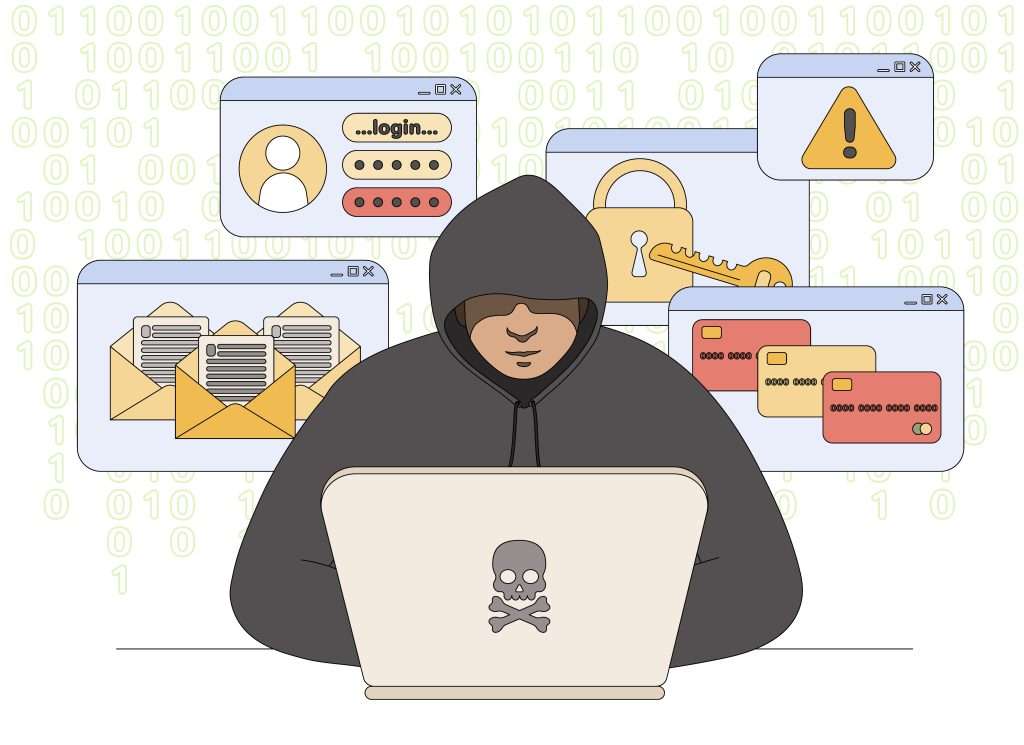Phishing attacks have become increasingly sophisticated, but there are definitive signs that security officers can look for to identify them.
Typically, a phishing email or message will try to create a sense of urgency, use questionable senders’ email addresses, contain links or attachments that seem suspicious, ask for personal information, or have misspelled words and poor grammar.
Recognizing these tell-tale signs is the first step in preventing the malicious consequences of a phishing scam.
What are the common characteristics of a phishing email?

Phishing emails often exhibit distinct traits that can serve as red flags 🚩. These messages regularly mimic the style of legitimate entities, using their logos and branding to appear official.
Nevertheless, upon closer inspection, one might notice that the email address does not match the organization’s domain or contains subtle errors. For example, a convincing yet fraudulent email from a bank may come from an address with misplaced letters or additional numbers.
Another common characteristic is the presence of urgent or threatening language that insists the recipient must take immediate action, such as confirming login details or updating account information. This urgency represents a psychological trick ⚠️ intended to rush individuals into responding without carefully scrutinizing the email.
Security officers should pay close attention to these markers when inspecting potential phishing attempts.
How can unexpected email attachments or links signal phishing?
Always exercise caution when emails contain unexpected attachments or links, as phishers commonly use them to deliver malware or redirect recipients to fraudulent websites.
Attachments may masquerade as invoices, receipts, or important documents, but in reality, they could be payloads designed to infect the recipient’s computer with viruses or ransomware upon opening. The absence of anticipation for the attached document should prompt further investigation.
Similarly, links in phishing emails often lead to imitation websites where unwary users are prompted to enter sensitive information. Before clicking, hover over the link to see the actual URL. If the link text doesn’t match the URL or if it leads to a suspicious website, it should be considered a phishing attempt.
Diligence in examining the authenticity of email contents 🔍 is a critical practice for security professionals.
What response strategies should companies have in place when they detect a phishing attempt?

Upon identifying a phishing attempt, it is crucial to have response strategies ready. The first step is to report the phishing attempt to the appropriate department, usually, IT or cybersecurity, followed by quarantining the email to prevent accidental clicks by other employees.
Educating staff on the incident can also raise overall awareness and reduce the risk of future attacks.
Companies should also consider implementing automated defense measures, such as email filtering software that helps catch phishing attempts before they reach inboxes.
Security officers can create and enforce security policies requiring regular password changes and the use of multi-factor authentication (MFA) as additional layers of defense. Visit our Anti-Phishing Tactics article for a broader understanding of implementing such strategies.
Are there any tools or technologies that aid in the detection of phishing?
Indeed, there are several tools and technologies designed to assist in the detection of phishing attempts. Email security platforms can filter and flag suspicious messages based on various factors, such as sender reputation and message content. Advanced solutions might even incorporate artificial intelligence (AI) to learn and adapt to new phishing techniques over time.
Besides technological aids, routine security awareness training can be profoundly effective. Tools like phishing simulators can test employees’ abilities to recognize malicious emails in a controlled environment, providing practical experience.
Security officers must constantly evolve their knowledge and tools to keep pace with the ingenuity of cybercriminals.
Conclusion
Examining email characteristics such as the sender’s address, the presence of urgent language, and suspicious attachments or links enables security officers to identify phishing attempts.
Promptly reporting and quarantining the suspicious message is essential when detecting a phishing attack, while educating staff to increase vigilance. Implementing sophisticated tools and regular training can strengthen an organization’s defenses.
Collectively, these measures constitute a layered security approach that can significantly reduce the risk of falling prey to phishing scams. 🛡️
- Analyzing Patterns in Failed Products - July 25, 2024
- Hybrid Cryptographic Systems - July 24, 2024
- Inadequate Threat Intelligence Integration - July 23, 2024
